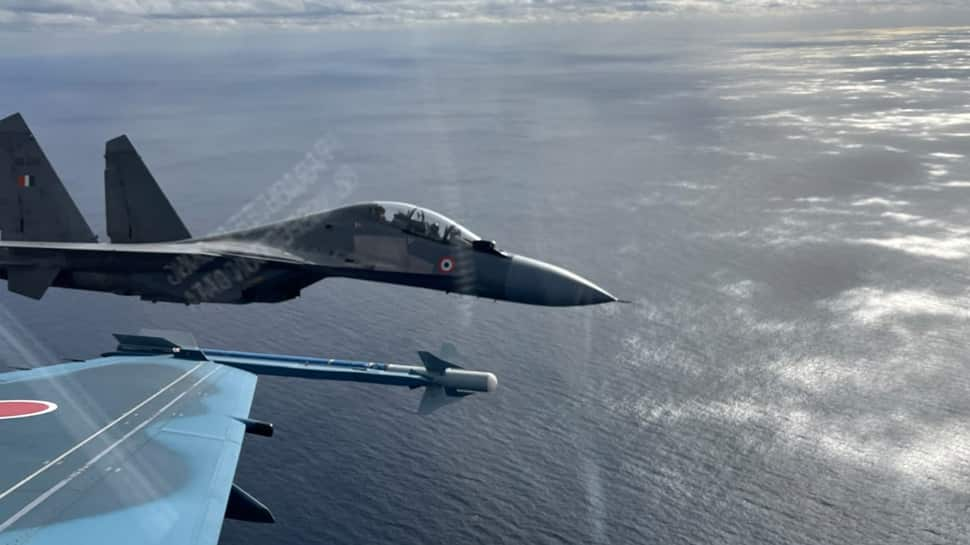A recent report from the United States Congress has reignited discussions surrounding the brief but intense India-Pakistan conflict that unfolded in May. The report offers a nuanced perspective on the aerial engagements between the two countries, presenting findings that both align with and challenge various claims made by the involved parties. It also shines a spotlight on China’s role in the conflict, revealing a complex interplay of military support, disinformation campaigns, and strategic posturing.
During the clashes, Pakistan had asserted that it successfully shot down six Indian fighter jets. This claim, however, has been called into question by the congressional report, which states that India lost three aircraft in the hostilities. Furthermore, the report suggests that not all of the downed Indian jets were the advanced Rafale fighters, which had been a focal point of Pakistan’s narrative and subsequent Chinese disinformation efforts. This assessment contrasts with earlier remarks from then-US President Donald Trump, who had suggested that as many as eight jets were lost in total during the engagements.
Based on the congressional report’s numbers, if India’s losses amounted to three aircraft, Pakistan may have incurred losses as well, potentially as many as five jets. This estimation aligns with claims from Indian Air Force (IAF) Chief Air Chief Marshal Amarpreet Singh, who had previously asserted that the IAF’s data indicated significantly higher Pakistani losses—between 12 and 13 aircraft. According to Air Chief Marshal Singh, at least a dozen Pakistani military aircraft, including F-16 fighter jets, were either destroyed or severely damaged during India’s Operation Sindoor, the codename for the Indian military’s aerial strikes during the conflict.
The Air Chief Marshal provided detailed evidence supporting these claims. He highlighted strikes on several key Pakistani assets, including a C-130 transport aircraft, an Airborne Early Warning and Control (AEW&C) platform, and four to five fighter jets—most of which were likely F-16s—targeted while they were parked in hangars or on the tarmac. Such strikes indicate a strategic approach by the Indian Air Force aimed at crippling Pakistan’s air capabilities on the ground as well as in the air.
In terms of air-to-air combat, Air Chief Marshal Singh revealed that the IAF had validated a long-range strike exceeding 300 kilometers, which successfully hit either an AEW&C or a signals-intelligence aircraft. He further elaborated that five high-tech Pakistani fighters—believed to be a mix of F-16s and JF-17s—were also engaged and neutralized during aerial dogfights. While previous reports had circulated about damage to Pakistani F-16s on the ground, this was the first official confirmation from the IAF of an air-to-air engagement involving Pakistan’s US-built fighters. The JF-17 jets, which were also targeted, are jointly produced by China and Pakistan, underscoring the role of Chinese military technology in Pakistan’s air operations.
Collectively, these assessments suggest that Pakistan’s total aircraft losses during the conflict could be between 12 and 13, according to Indian military sources. This figure significantly challenges Pakistan’s claims and paints a picture of a more costly engagement for Islamabad than publicly acknowledged.
The US congressional report also delves into China’s involvement in the conflict, revealing a multifaceted role that goes beyond mere political alignment. Analysts have long debated the true outcomes of the four-day clash, but the new findings indicate that China leveraged the confrontation for both propaganda purposes and as a live testing ground for its military hardware.
During the May 7–10 hostilities, Pakistan heavily relied on Chinese military support and technology. Chinese aircraft such as the JF-17 and J-10C fighters were actively employed. Additionally, Pakistan utilized Chinese-made PL-15 beyond-visual-range missiles, HQ-9 and HQ-16 air defence systems, various drones, and was supported by Chinese reconnaissance satellites and the BeiDou navigation system. These assets provided Pakistan with a significant boost in terms of both offensive and defensive capabilities during the conflict.
The congressional report highlights that China orchestrated a coordinated disinformation campaign aimed at undermining India’s Rafale fighter jets, which had recently been inducted into the Indian Air Force and were considered a game-changer in aerial warfare capabilities. The campaign sought to question the efficacy and performance of the Rafale jets, leveraging social media and other platforms to spread misleading narratives.
Simultaneously, China gathered valuable operational data from the conflict, which it then used to promote its

